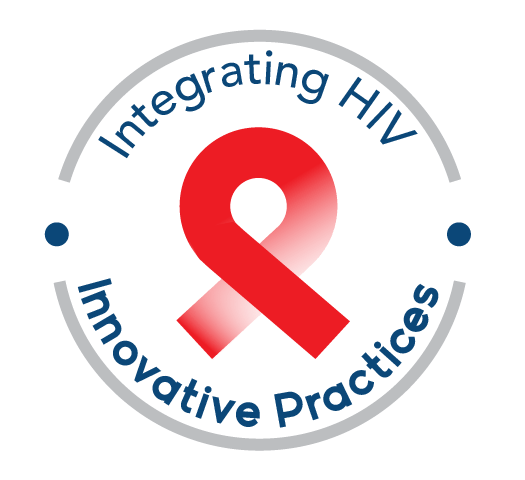
Summary
The purpose of this module is to more readily examine opioid addiction treatment, specifically buprenorphine--how it works, its formulation, safety profile, and variance from methadone and naltrexone (other opioid addiction treatment options).
Materials Needed
- A computer and compatible LCD projector to play the PowerPoint presentation.
- Printer or copier machine (need one copy for each person)
Suggest providing copies of the What is Precipitated Withdrawal. What it is. How to Avoid It. sheet found on page 2 of this resource on the TARGET Center. SPNS grantees found the visual representation of opioid withdrawal to assist with understanding and health literacy levels. It is recommended that the handout be passed around at the end of the trainer's PowerPoint presentation; this will enable participants to give the trainer their full attention. A few minutes, however, should be allotted at the end of the training session to discuss the handout. Participants are encouraged to take the handouts with them for future reference.
Slide #9: What is Methadone, and How Does it Work?
- Methadone is a synthetic full opioid agonist. It works to block withdrawal symptoms by binding to and triggering opioid receptors. Higher doses of methadone reduce the craving for and effects of other opioids.
- Methadone is administered by accredited, certified opioid treatment programs (OTPs), or methadone clinics; some OTPs also provide buprenorphine.
- Methadone-based MAT may be a good option for some patients.
Slide #10: What is Buprenorphine, and How Does it Work?
- Buprenorphine is a semisynthetic partial opioid agonist, so it does not stimulate the brain's opioid receptors as much as full agonists (such as heroin, morphine, OxyContin, fentanyl, and methadone), thus the typical opioid effects—such as euphoria and respiratory depression—are milder with buprenorphine.
- Buprenorphine works by knocking other opioids in the brain off their receptors and binding tightly to the same receptors, so that other opioids cannot occupy them. Buprenorphine prevents withdrawal symptoms and reduces drug cravings.
- Buprenorphine stabilizes brain neurochemistry.
- Buprenorphine may be offered within primary care settings by qualified physicians.
Slide #11: Suboxone
- Buprenorphine monotherapy is available only in generic form. (Subutex, the brand version, was discontinued in September 2011.)
- Buprenorphine monotherapy is used less commonly, generally during pregnancy or under directly observed therapy though its use is increasing with the arrival of the generic on the market because of lower cost to patients.
- Suboxone is a coformulation of buprenorphine and naloxone that comes as an orange, hexagonal tablet or film containing buprenorphine and naloxone in a 4:1 ratio; both are administered sublingually (meaning under the tongue).
- Naloxone is used to reverse overdose because it binds to—and blocks— opioid receptors. When naloxone is taken sublingually, it is poorly absorbed, but when injected, naloxone causes the immediate onset of withdrawal symptoms (also known as “precipitated withdrawal”).
- Naloxone was combined with buprenorphine to reduce the risk of diversion.
- For this reason, Suboxone is the preferred method of treatment.
Slide #12: Buprenorphine/Suboxone Safety
- Suboxone has a favorable safety profile.
- Buprenorphine is associated with the risk of psychological and physical dependence, though the risk involved with buprenorphine is generally considered to be lower than that associated with full opioid agonists.
- Since buprenorphine is a partial agonist, its effects plateau within a 16- to 32-mg dose range. Increasing the dose of buprenorphine beyond this range does not increase the effect, unlike full agonists, such as morphine, methadone, oxycodone, hydrocodone, heroin, codeine, and fentanyl. This is called the “ceiling effect.” Buprenorphine's "ceiling effect" lowers the risk of overdose.
- However, the risk of overdose increases when buprenorphine is used with alcohol, benzodiazepines, and other opioids. Monitoring is recommended when buprenorphine is coadministered with CYP 3A4 inhibitors (overdosing) and inducers (underdosing).
- Buprenorphine has fewer drug-drug interactions with HIV medications and other commonly used drugs than methadone.
- All patients should be screened for use of other medications.
- Potential drug–drug interactions should be discussed with patients before initiation of buprenorphine.
- Buprenorphine withdrawal symptoms are less severe than methadone withdrawal symptoms.
- Patients who choose to discontinue buprenorphine should have their dosing gradually reduced, and undergo monitoring to reduce the risk of relapse and avert onset of withdrawal symptoms.
Slide #13: Can Buprenorphine be Used for Detox?
- Buprenorphine can be used for detoxification on an inpatient basis with medical supervision.
- Buprenorphine detoxification can help people ease physical dependence on opioids by transitioning them to a non-physically dependent state.
- Detoxification with buprenorphine was NOT studied in HRSA's HIV/AIDS SPNS initiative on the integration of buprenorphine into HIV primary care settings.
- Nor has buprenorphine detox been extensively studied among people with HIV (PWH).
Slide #14: Naltrexone
- Naltrexone is an opioid antagonist.
- It's another option of MAT that can be prescribed in primary care settings.
- Oral tablets of naltrexone were not readily used due to adherence issues. The FDA-approved injectable form of naltrexone (taken monthly), however, helps address this issue.
- Medical personnel with prescribing powers may prescribe naltrexone.
- SAMHSA has released an advisory outlining more specifics on naltrexone.
- Naltrexone was not investigated in the SPNS study.
Slide #15: Buprenorphine, Methadone, and Naltrexone
- Methadone has been used to treat opioid addiction for decades, whereas buprenorphine was approved in 2002.
- Thus, more information is available on long-term safety and treatment outcomes with methadone versus buprenorphine.
- Methadone can be administered only through a certified and accredited OTP (a methadone clinic), where certain restrictions apply.
- In contrast, buprenorphine and naltrexone can be administered within primary care settings.
- Methadone is a full opioid agonist, whereas buprenorphine is a partial opioid agonist and naltrexone is an opioid antagonist.
- When buprenorphine is coformulated with naloxone (Suboxone) it has a low abuse profile, since naloxone can precipitate withdrawal when it is injected.
- Methadone is taken once daily, whereas buprenorphine may be taken once daily or three times weekly, on alternate days. Naltrexone oral tablets are taken daily whereas the injectable form is taken monthly.
- Naltrexone has higher pharmacy costs associated with it than does buprenorphine and methadone, which may be a deterrent for some patients.
- Buprenorphine has fewer drug-drug interactions with antiretrovirals than methadone.
- Methadone may be more effective than buprenorphine when patients require a more structured setting or would respond better to a full opioid agonist.
- It is important for patients to have options for MAT.
